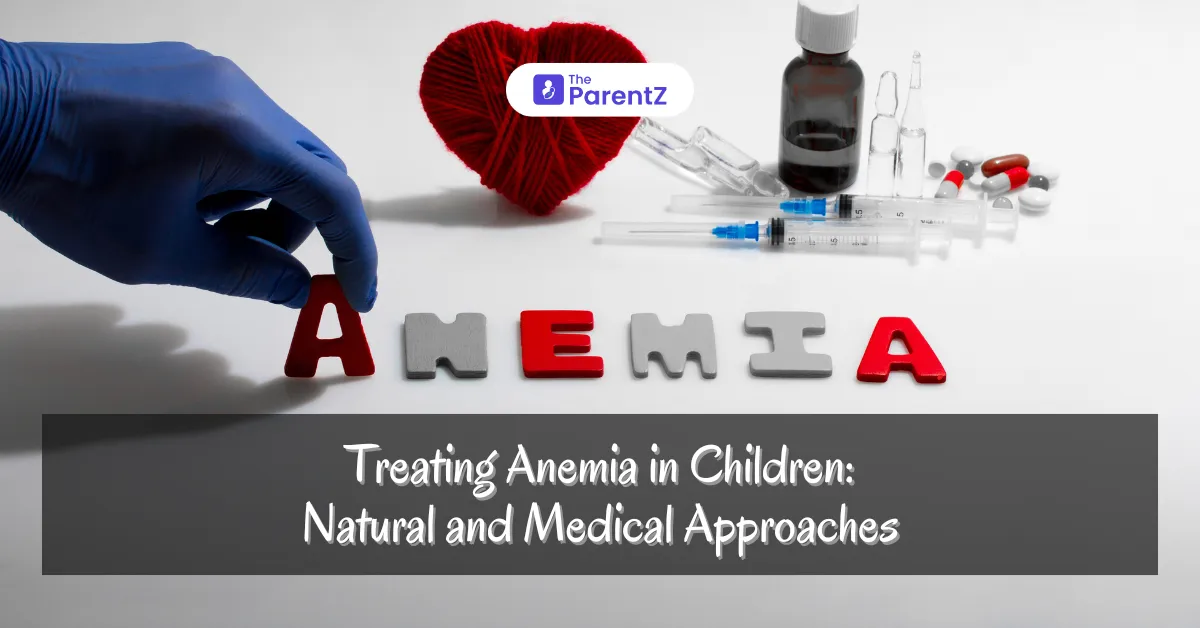Anemia is a common condition in children, characterized by a low red blood cell (RBC) count or decreased hemoglobin levels. It can result from nutritional deficiencies, genetic disorders, chronic diseases, or infections. While iron deficiency anemia is the most prevalent type, anemia can also occur due to vitamin deficiencies, chronic inflammation, or bone marrow disorders. Treating anemia in children requires a holistic approach, combining natural remedies with medical interventions based on the underlying cause.
Natural Approaches to Treating Anemia in Children
1. Dietary Modifications
A well-balanced diet plays a crucial role in preventing and treating anemia naturally. Including iron-rich foods, along with other essential nutrients, can improve hemoglobin levels and overall health.
A. Iron-Rich Foods
Iron is essential for hemoglobin production, and its deficiency is the most common cause of anemia. There are two types of dietary iron:
• Heme Iron (More Absorbable): Found in animal-based foods.
• Sources: Lean meats (chicken, fish), eggs.
• Non-Heme Iron (Less Absorbable): Found in plant-based foods.
• Sources: Leafy greens (spinach, kale), legumes (lentils, chickpeas), fortified cereals, tofu, nuts, and seeds.
To improve iron absorption, pair iron-rich foods with vitamin C sources such as citrus fruits, tomatoes, bell peppers, and strawberries.
B. Vitamin B12 and Folate Sources
Deficiencies in vitamin B12 and folate can cause megaloblastic anemia.
• Vitamin B12 Sources: Dairy products, eggs, fortified cereals, soy products.
• Folate Sources: Leafy greens, beans, oranges, bananas, fortified grains.
C. Copper and Zinc Sources
These minerals support iron metabolism and red blood cell production.
• Copper Sources: Nuts, seeds, whole grains, shellfish.
• Zinc Sources: Legumes, dairy, nuts, whole grains.
2. Home Remedies and Lifestyle Changes
• Cooking in Cast Iron Pans: Increases the iron content of food naturally.
• Avoiding Tea or Coffee with Meals: These beverages contain tannins that inhibit iron absorption.
• Regular Sun Exposure: Helps maintain vitamin D levels, which supports bone marrow function.
• Hydration: Drinking enough water aids in better circulation and nutrient transport.
Medical Approaches to Treating Anemia
If dietary changes alone are insufficient, medical intervention may be necessary based on the severity and underlying cause of anemia.
1. Iron Supplementation
For iron-deficiency anemia, oral iron supplements (ferrous sulfate, ferrous gluconate) are commonly prescribed.
• Dosage: Depends on the child’s age and severity of anemia.
• Administration: Best taken with vitamin C-rich foods to enhance absorption.
• Side Effects: Nausea, constipation, dark stools—manageable by adjusting dosage or switching formulations.
In severe cases, intravenous (IV) iron therapy may be recommended.
2. Vitamin and Mineral Supplementation
• Vitamin B12 Injections or Supplements: Given if deficiency is due to malabsorption (e.g., pernicious anemia).
• Folic Acid Supplements: Recommended for folate-deficiency anemia.
• Copper or Zinc Supplements: Used when deficiencies are detected through lab tests.
3. Treating Underlying Conditions
If anemia is caused by an underlying medical condition, addressing the root cause is essential:
• Chronic Disease Anemia (e.g., kidney disease, inflammatory disorders): Treated with erythropoietin-stimulating agents to boost RBC production.
• Sickle Cell Anemia & Thalassemia: Managed with blood transfusions, medications, and in some cases, bone marrow transplantation.
• Hemolytic Anemia: Requires corticosteroids, immunosuppressants, or splenectomy in severe cases.
4. Blood Transfusion
For severe anemia, especially in cases of thalassemia major, sickle cell disease, or aplastic anemia, blood transfusions are needed to restore hemoglobin levels.
5. Bone Marrow Transplant
For conditions like severe aplastic anemia or certain genetic disorders, bone marrow transplants may be the only curative option.
Prevention of Anemia in Children
1. Balanced Diet: Ensure a nutrient-rich diet with sufficient iron, vitamins, and minerals.
2. Regular Screening: Routine blood tests for children at risk (e.g., preterm infants, those with chronic illnesses).
3. Supplementation: Iron and vitamin supplementation in high-risk children.
4. Vaccination: Prevent infections that may contribute to anemia (e.g., malaria, tuberculosis).








Be the first one to comment on this story.